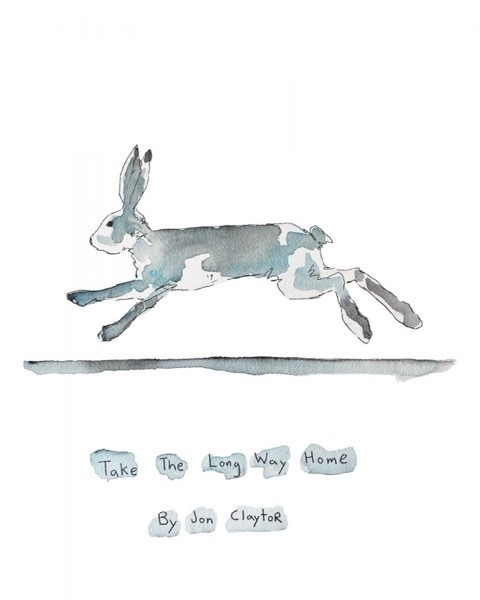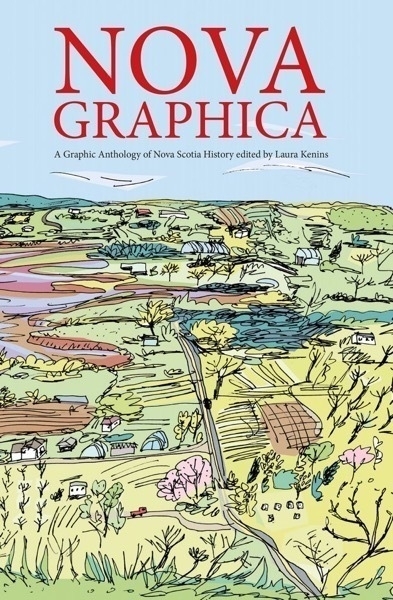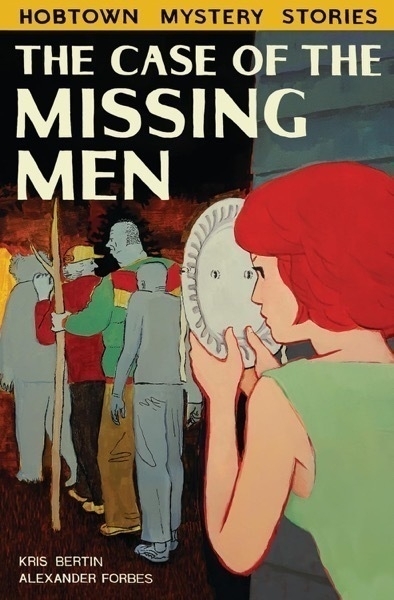📚 Purchased from Block Shop Books on a day-trip to Lunenberg, whose picture-postcard downtown area boasts a large number of restaurants, gift shops, and book stores.
I remember entering at the end of our day there, with the store about to close in 10 minutes. With no time to linger, I scanned for the graphic novels section and plucked out these three beauties.

Take the Long Way Home by Jon Claytor.
I love diary comics and comics memoirs but this book bounced right off me. I remember reading this book but cannot tell you much more about it. The author takes a cross-country road trip after the collapse of a relationship while also struggling to stay sober. Along the way, he meets up with friends, children, family, talks to the animals, makes new friends, and along the way tries making friends with himself too. The drawings and some watercolors (the book is B&W and grayscale, no color) are mostly all photo-referenced with, more often than not, one big drawing to each page. The episodic, meandering nature of his journey (both external and internal), and the visually uninteresting pictures and layouts, made this big slab of a book feel rather thin. I will give it another try later; maybe I was having an off week.

Nova Graphica: A Graphic Anthology of Nova Scotia History
A fantastic collection of short pieces on Nova Scotian history and culture, with a rich blend of personal Nova Scotian history and culture, as well. I loved seeing the variety of drawing styles, the different types of storytelling, and the panorama of topics: Black history, Indigenous history, LGBTQ, ghost stories, family stories, folklore – the gamut. For some reason, I remember the last story called “Five Sided House” by Colleen MacIsaac. It’s a fiction piece about two high school girls who take on as a school project an archeological study of the hundreds of years old foundation of what appears to be a five-sided house located in the hills above Halifax. A little Googling reveals that it’s a real historical conundrum with no clear explanation of the structure’s origin or purpose. What could have been a dry retelling of the scant facts instead becomes a lovely meditation of the past and the present, with imagination as the necessary bridge between the two.

The Case of the Missing Men by Kris Bertin and Alexander Forbes.
Bertin and Forbes contributed a spooky folk tale to Nova Graphica. In The Case of the Missing Men, they give themselves 300 pages to cut loose with their own brand of local legend, noir storytelling, dark mystery, and unsettling imagery. The first of the “Hobstown Mystery Stories” series, the book follows the investigation of a high school student’s missing father by the Teen Detective Club (a registered afterschool program!). Publishers Weekly nicely summed up the book as a cross between Scooby-Doo and David Lynch, though there are few shenanigans and high-jinks; instead, there are threatening law officers, a secret society, grotesque monster-men, deaths, bodies, chases, and just what is going on behind those kennel fences? The story is odd, compelling, weird, and the exquisitely etched line drawing, detailed cross-hatching, and frankly creepy images make the whole package delightful and re-readable.
The book appears to be out of print, sadly, hence my using the Amazon link. I plan on getting myself their second novel, The Cursed Hermit, as a Christmas present to myself.
By a wonderful coincidence, all of these books were published by Conundrum Press, an independent Canadian publisher of literary graphic novels. They have an extensive catalog of works that are locally, culturally, and artistically daring. I love the range of titles and styles they offer and look forward to reading more of their books.